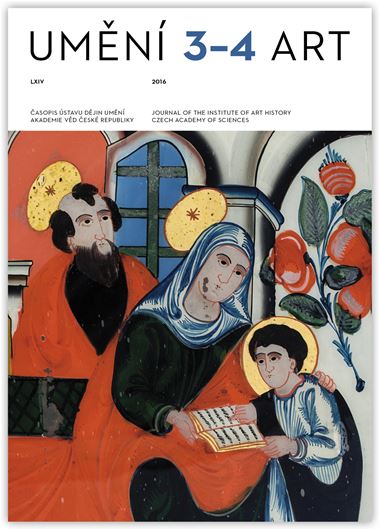Mahulena Nešlehová
Neznámé kresby Bohumila Kubišty
The recent discovery of two hitherto unknown ink drawings by painter Bohumil Kubišta (1884–1918) sheds new light on the early work of this prominent figure of the 20th-century Czech avant-garde. These two drawings are masterfully rendered portraits of a seamstress: a profile picture of a seated woman with a window view of a fictitious Italian landscape in the background and a portrait ‘en face’ of a sewing woman wearing glasses. Judging from the style of the drawings, the ambience, and the figures’ complexion and clothing, these works were probably produced in the autumn of 1906 while Kubišta was living in Florence and preparing for the entrance exams of the Florence Academy on 5 to 10 November 1906. Evidence in support of this conjecture is provided by a comparison of these works to two of the artist’s coloured ink drawings from the same period (Self-portrait / Vlastní podobizna, 1906, and Portrait of a Lady/Podobizna dámy, 1906) and to an etching titled Two Seamstresses/Dvě švadleny, also from 1906. In a letter that he wrote to his uncle Oldřich Kubišta on 2 November 1906 he mentions that on 1 November he started working on two ‘large ink drawings and completed one pastel’. From the archives of the Florence Academy, however, we know that he did not present any work at the exams. It may be assumed, therefore, that in preparation for these exams Kubišta devoted his time to refreshing his artistic skills, as he had had few opportunities to exercise them during his military service in Pula (1905–1906). This seems all the more likely given that, in the close of his letter, Kubišta mentions that he was working on ink drawings on 1 and 2 November. This means that the ink drawings mentioned in the letter are not the two large, time-demanding ink drawings titled Self-portrait and Portrait of a Lady. The latter are representative of his artistic skills and were likely presented while Kubišta attended the Academy’s ‘Speciale Figura’.The two newly found portraits of a seamstress attest to Kubišta’s skills as a drawer and also to his sensitive perception of social subject matter, which stimulated his imagination and whose impulses he was able to develop further in subsequent work.
Full-text in the Digital Library of the Czech Academy of Sciences:
https://kramerius.lib.cas.cz/uuid/uuid:4aca80ef-6062-4e17-b497-315121e67b43
< back

